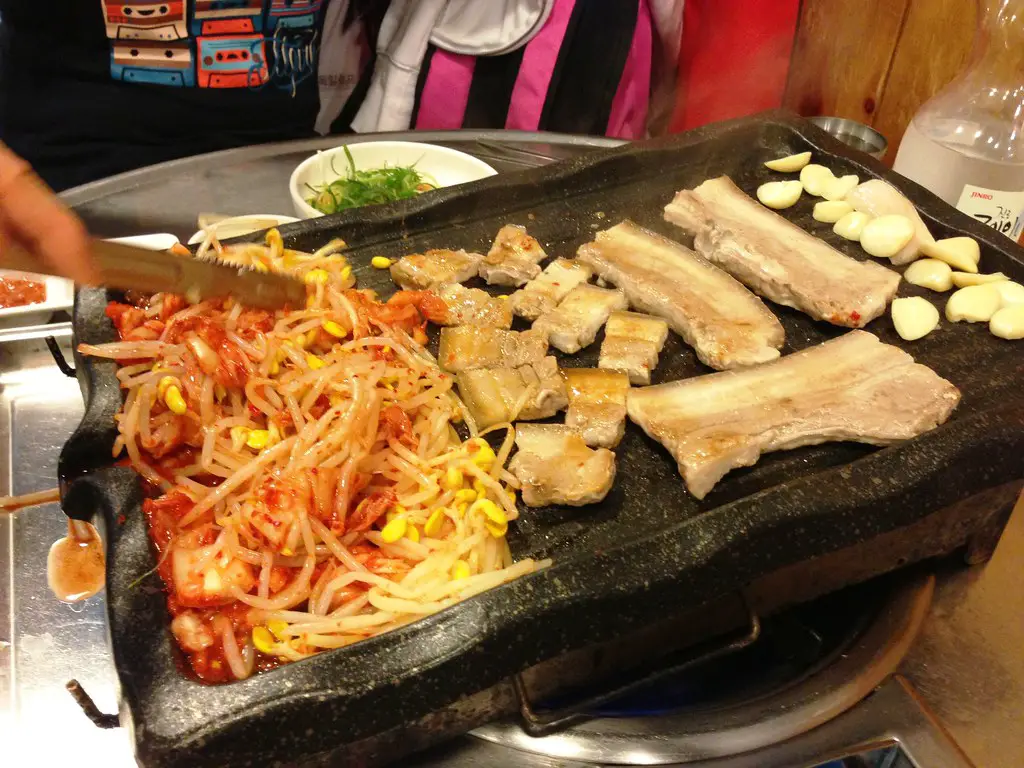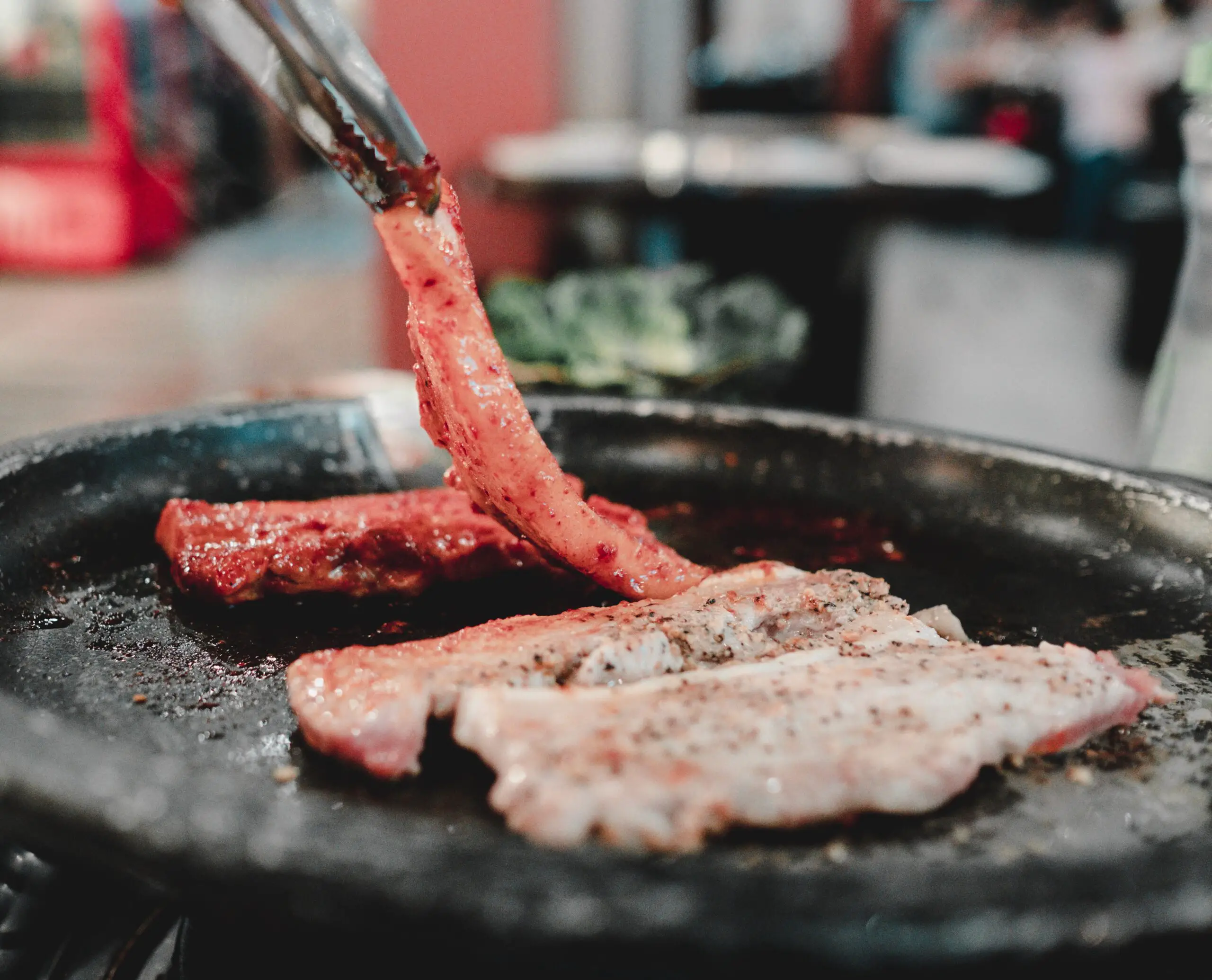Sliced Fresh Pork Belly is One of the Most Popular Korean Meals
Samgyeopsal means “three layered meat” in Korean, referring to the three layers of fat found on the slices of pork belly. Raw, it resembles thick strips of bacon, but unlike bacon, it is not smoked or cured. Instead, the meat is grilled fresh, with a sprinkling of coarse salt.
At a typical Korean samgyeopsal restaurant, the meat is ordered by portion (called “inboon” in Korean) and grilled on a hot slab or grill in the middle of the table. When it is almost cooked, it is cut into smaller strips using scissors. Diners then dip these bit-sized pieces of meat into a dish of sesame oil, salt and pepper, and wrap them in lettuce or perilla leaves (often mistakenly called sesame leaves) to create a small bundle. Other condiments can be added, including pickled bean sprouts, sliced daikon radish and ssamjang, a paste made from soybeans, red chili pepper, sesame oil and garlic.
Korean BBQ Pork with Kimchi

One popular way to eat samgyeopsal is to fry it with kimchi. Typically, a mound of kimchi is placed near the bottom of an angled grill stone, where it acts like a kind of dam, sopping up the grease from the cooking pork belly. The cooked kimchi is then cut into small pieces and added to the lettuce and meat bundle.
Other things you may find at a traditional samgyeopsal meal are fried onion and potato slices, shredded spring onions, and soju, a common Korean alcoholic beverage that resembles Japanese sake or a sweeter version of vodka.
Although Western diners may find samgyeopsal fatty, Koreans prize fat as one of the best parts of the meat. As such, many Korean diners believe that the fattier a piece of meat is, the higher the quality. If you are being taken to dinner by Korean hosts, don’t be surprised if you are offered the fattiest piece of samgyeopsal, as a gesture of politeness and honor.
Most Prized Pork Comes From Black Pigs of Jeju-do

Some of the most highly prized samgyeopsal in Korea comes from the island of Jeju-do, which is famous for its black pigs. These pigs were traditionally raised on human waste, and are thus sometimes referred to as “ddong dwaeji” — “poo pig.” This variety of meat is generally more expensive than regular pork, although it is usually still cheaper than beef, which is consumed less frequently.
Like most Korean dishes, Samgyeopsal is eaten communally, with diners taking pieces directly from the grill in the center of the table. It is a popular evening meal across the country, as families or groups of friends gather to share dinner together. If you visit Korea, a meal of samgyeopsal is absolutely essential to having an authentic Korean experience, and sampling one of the country’s best-loved dishes.

It’s not a matter of where, but when. Time is precious and my time spent living and experience the cultures of this world is what I lust for. This is why I created this website, to share true, genuine experiences and not just typical touristy info. Travel, the love of coffee, and food!
